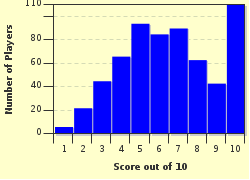Quiz Answer Key and Fun Facts
1. In modern toilets, the bends collecting toilet water are shaped like certain letters. Can you identify the shapes?
2. Not every toilet is connected to a sewer system. Septic tanks and similar inventions are also used. In which country was a worm-based composting toilet developed?
3. Usually, gravity takes the waste materials down the drain and out of the house. How are suction and subsequent clogging issues reduced?
4. At the treatment facilities, the waste is usually put in a large pond to settle. Why?
5. What does a filter system to clean up water look like?
6. There are more modern ways to filter dirty water. Which of the following is NOT one of those modern techniques?
7. Another step in a waste management system is Rotating Biological Contactors. In what country were these contactors first used?
8. Biological treatment is just one of many steps in waste-water processing. Which of the following tertiary treatment methods is designed to detoxify the water further?
9. In small communities, zoos, parks and even industrial sites you may find artificial reed beds and medium sized ponds with sand and water plants. Those are used instead of the standard secondary treatments. What are they called?
10. There are substances that cause a lot of trouble in trying to remove them from the water, and although they are not poisonous as such, harm can still be done if the concentration in the water is too high. Which of the following is not a problem?
Source: Author
Lwaxy
This quiz was reviewed by FunTrivia editor
crisw before going online.
Any errors found in FunTrivia content are routinely corrected through our feedback system.

